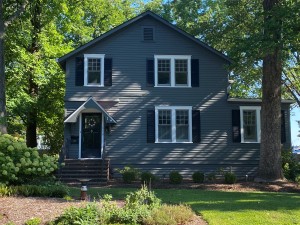As a voracious reader, I depend a great deal on other folks’ recommendations. Ten years ago I added a column to my reading spreadsheet – Inspiration. When a finished title gets added to the spreadsheet I notate where I got the idea for reading the book. If it’s a specific person, I list their name. If it’s a bookclub selection, BBC, Illiterati or MIA. If I actually remember where I first encountered the title, I enter that (Scientific American, Goodreads, CNN). If it’s book off one of my various lists, that gets written in (Monarchs, Presidents, Banned, Newbery, Caldecott). And, if by the time I finish a book (that’s a whole new blog topic – my over-curated library account), I don’t remember where I got the idea any longer, then O&A, Out & About, is the label.
All of this to say that I do take book recommendations seriously. I’m pretty sure that I’ve read 75% of the books we’ve talked about on this blog, not because, as Steve used to say “VS has read everything” but because when somebody mentions a book on the Trail, I write it down or go to my library account immediately.
I have a friend in Indianapolis who reads as much as I do and although we don’t always gravitate to the same thing, I’ve found most of his recommendations fascinatingly good reads. (For example, I would never have picked up Countdown Bin Laden by Wallace & Weiss of my own accord, but since he spoke highly of it, I gave it a shot. It was excellent and is likely to make my top ten this year.) When he suggested a title that I had heard of from a few other folks, I picked it up from the library. That’s when I found out that the title is also an Oprah Pick and has either won or been a finalist for just about every literary award out there. 93% of folks who have reviewed on Amazon have given it one or two stars. Just 1% rated it with only one star. This is unprecedented so I was really looking forward to getting into it – I even suggested it to my other book club.
I didn’t like it. I didn’t like it to the point that if it hadn’t been a book club title, I might not have finished it. It was WAY too long; it’s really two stories, related but distinct enough for two separate treatments. Then there was the jumping around in the timeline, which I didn’t find to be well-handled. Too much repetitiveness; probably could have trimmed 50 pages by leaving out all references to “collard greens”. But the biggest problem was that there wasn’t one likeable character in the entire book; 400+ years of story and 900+ pages of book, that’s a LOT of unlikeable characters. They ran the gamut from heinous to slightly sickening, but really not one really decent person among the lot of them.
But it’s really hard to dump on a book that appears to be universally loved and admired. REALLY hard. And because I like to think I’m a discerning reader, it has made me wonder what’s wrong with me. What have I missed. In fact, I’ve been writing and re-writing this blog post in my head for two weeks trying to decide whether to name the book or just ruminate on feeling so out of step with what feels like the whole of humanity. I do feel out of step a fair amount. I’m not interested in fashion. I think reality TV is an abomination. Much of what is generally valued by current culture leaves me “meh”.
That’s why I am extremely grateful that I have found niches where I feel like I fit in, with good friends who think a bit more like I do. This is one of those places, of course. Thanks for all of you in my life and on the Trail who leave a place for my quirky self at the table!
Tell me about the last book that you DIDN’T like. (And if you’ve read the book I’m talking about and liked it, that’s OK… you’re in good company!!)














